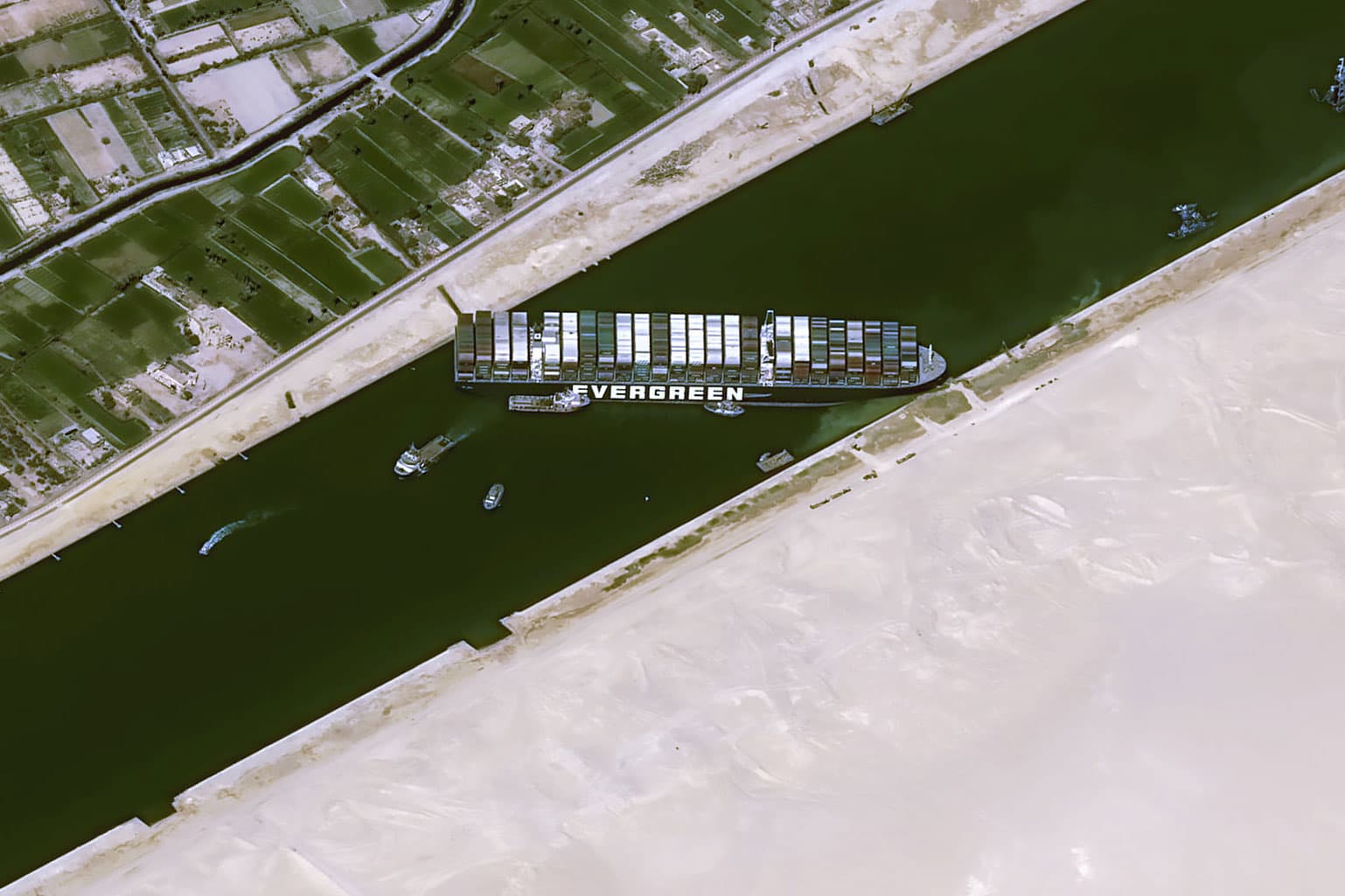The Ever Given, one of the world’s largest container ships, is still wedged in the Suez Canal, and the economic effects from the blockage — now in its fourth day — are beginning to unfold.
White House Press Secretary Jen Psaki said Friday that the U.S. is monitoring the situation closely. “We’ve offered U.S. assistance to Egyptian authorities to help reopen the canal…those conversations are ongoing,” she said during a press briefing, before adding that there could be “some potential impacts on energy markets.”
Oil prices jumped on Friday, amid speculation that dislodging the ship could take weeks. West Texas Intermediate crude futures and Brent crude each advanced more than 4%. The gains come after prices dipped on Thursday, despite the gridlock.
“Traders, in a change of heart, decided that the Suez Canal blockade is actually becoming more significant for oil flows and supply deliveries than they previously concluded,” said Paola Rodriguez-Masiu, vice president of oil markets at Rystad Energy.
Of the 39.2 million barrels per day of crude imported by seaborne methods in 2020, 1.74 million barrels per day passed through the Suez Canal, according to data from research firm Kpler.
This represents under 5% of total flows, but as the build-up stretches on, the impacts rise.
Bernhard Schulte Shipmanagement, the technical manager of the ship, said another attempt on Friday to re-float the cargo carrier proved unsuccessful.
A specialized suction dredger that can shift 2,000 cubic meters of material every hour is now on the site, and “arrangements are also being made for high-capacity pumps to reduce the water levels in the forward void space of the vessel and the bow thruster room,” the firm said Friday.
Bernhard Schulte added that two additional tugboats will arrive by Sunday to help in the re-float operation.
Douglas Kent, executive vice president of strategy and alliances at the Association for Supply Chain Management, noted that even after the ship is dislodged the impacts will continue to be felt. Ships will arrive at ports simultaneously creating new traffic jams, for instance. Cargo schedules created months in advance will need to be reshuffled with ships now sitting in the wrong place.
More importantly, there’s a lack of visibility throughout the entire supply chain.
“The whole knock-on effect through the multi-hierarchy of the supply base — we’re not going to know that,” Kent said. “Companies don’t have visibility into their supply chain.” While a company might know it has a product sitting on a ship that’s stopped, the impact of delays down the line are unknown.
The Suez Canal handles around 12% of global trade, making it an essential point of passage. Each day of blockage disrupts more than $9 billion worth of goods, according to Lloyd’s List, which translates to about $400 million per hour.
Some ship operators have already decided to re-route their vessels, anticipating that the Ever Given won’t be dislodged soon. Sending ships around the Cape of Good Hope adds more than a week of sailing, while also increasing costs.
“It’s a terrible mess,” said Anthony Fullbrook, president of OEC Group’s North American region.
The disruption caused by the backlog in the Suez Canal comes as global supply chains are already strained by Covid-19.
“There’s already a shortage of equipment, of space, everything’s operating at peak capacity … It’s already slowly melting down, and this will just exacerbate it,” he added.
